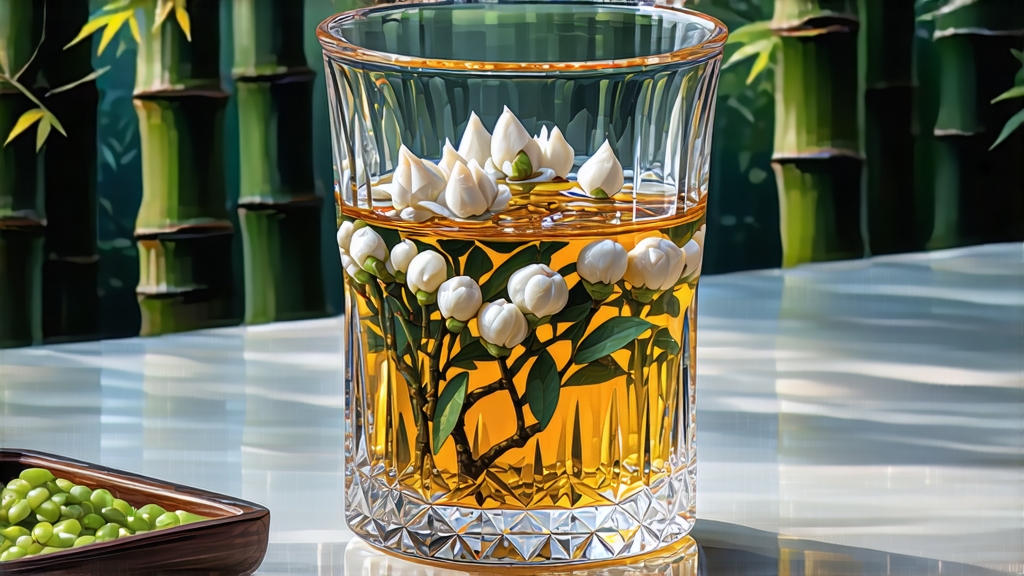
Bai Hao Yin Zhen—literally “White Hair Silver Needle”—is the quiet aristocrat of Chinese tea. While green tea races to market each spring and pu-erh auctions roar with speculation, Silver Needle drifts in on the last cool breath of March, wrapped in fog and silence. International drinkers often meet white tea first through bagged blends labeled merely “white,” yet that generic leaf is usually a broken-grade Shou Mei. To know the genre fully one must begin with its purest expression: the unopened, down-coated bud that has been worshipped by Chinese emperors, smuggled along the Tea-Horse Road, and today carried in the coat pockets of Fuding grandfathers like a secret charm against summer heat.
History whispers rather than shouts. The Tang dynasty (618-907) record Beiyuan Gongcha speaks of “white cakes” pressed as tribute, but those were made from large-leaf tea light-colored after steaming, not from the tiny buds we now call Silver Needle. Real textual footprints appear in the late Song (960-1279), when the imperial court moved south and Fujian’s rough mountains became the last line of cultural defense. A 1796 county gazetteer from Fuding first mentions picking “silver buds” for export to Southeast Asia, where Hokkien merchants traded them for spices and rattans. By 1857 a county magistrate named Chen Huan planted 100 selected bushes on Taimu Mountain; cuttings from those mother trees still circle the globe, quietly parenting gardens from Assam to the Caucasus.
Geography is destiny. Only two micro-regions hold China’s protected-origin status for true Bai Hao Yin Zhen: Fuding and Zhenghe, both in northern Fujian. Taimu’s granite spine traps maritime clouds, creating 90 % humidity and a 7 °C diurnal swing that forces the tea bush to hoard amino acids in its dormant bud. Locals say the bud should be “as straight as a needle, as silken as a crane’s plume, and smelling of morning chestnut flowers.” Pickers work between Qingming and Grain Rain (early April) when the bud reaches 2.5–3 cm but has not yet unfurled into a leaf. A skilled woman can gather 1,000 buds an hour; 30,000 buds—an entire day’s labor for three people—yield barely 500 g of finished tea.
The craft looks like doing nothing, yet nothing must be done perfectly. Once baskets arrive at the farmhouse, buds are spread one layer thick on water-woven bamboo trays. For 36 to 48 hours they rest in a shaded corridor where louvered windows invite a chess-game of wind and sun. Moisture drops from 75 % to 10 % without a single turn of the wrist; oxidation is allowed to begin but never to race. When the bud feels cool as river stone and the down glows argent under lamplight, the tray is slid into a charcoal-warmed loft for 20 minutes of “soft baking” at 40 °C. No rolling, no fixing, no shaping—just the art of leaving. The result is a feather-light arrow that can still stand upright when dropped into a glass.
Western tea science calls this minimal processing “non-enzymatic browning restraint,” but locals speak in lunar images: “We let the moon drink first.” Because cell walls remain almost intact, Silver Needle ages more slowly yet more complexly than other whites. A 2019 study at Zhejiang University tracked theaflavin-to-thearubigin ratios over ten years; the curve resembles Burgundy Pinot rather than green tea, gaining honeyed lactones while retaining a limpid liquor. In Fuding it is customary to lay down a tong of Silver Needle when a daughter is born, uncaking it only at her wedding banquet.
To brew, surrender your kettle. Water hotter than 85 °C bullies the bud, coarsening its signature white-pepper note into cabbage. Use 3 g per 120 ml—about a tablespoon of buds—in tall borosilicate glass so you can watch the slow ballet. After the first 30-second rinse (discard), infuse 45 seconds; subsequent steeps lengthen by 15. The liquor should be the color of morning moon on pine straw, never golden like Longjing.